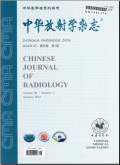Pipeline Flex与第一代Pipeline血流导向装置治疗颅内动脉瘤的对比研究
Comparison of the Pipeline Flex and the first-generation Pipeline embolization device for the treatment of intracranial aneurysms
摘要目的:探讨第二代Pipeline血流导向装置(PED Flex)与第一代Pipeline血流导向装置(PED Classic)在治疗颅内动脉瘤手术操作参数及围手术期并发症的差别。方法:回顾性分析郑州大学人民医院2015年2月至2016年8月应用PED Classic和2018年1月至2019年7月应用PED Flex治疗的颅内动脉瘤患者,PED Classic组53例,PED Flex组118例。记录2组患者手术操作时间、对比剂用量、术中透视时间及围手术期并发症情况,采用独立样本 t检验比较手术操作时间、对比剂用量、术中透视时间的差异,以χ 2检验比较并发症发生率。 结果:PED Classic组53例共治疗73个动脉瘤,PED Flex组118例共治疗146个动脉瘤。PED Classic组手术时间为(159.0±42.0)min,PED Flex组为(121.9±46.0)min,差异有统计学意义( t=5.012, P<0.001)。PED Classic组术中对比剂用量为(156.4±39.4)ml,PED Flex组为(110.1±38.5)ml,差异有统计学意义( t=7.229, P<0.001)。PED Classic组的术中总透视时间为(34.7±5.7)min,PED Flex组为(22.8±7.6)min,差异有统计学意义( t=10.196, P<0.001)。PED Classic组的围手术期并发症发生率(9.4%,5/53)高于PED Flex组(2.5%,3/118),但差异无统计学意义(χ 2=2.503, P=0.114)。 结论:应用PED Flex治疗颅内动脉瘤的安全性好,且同PED Classic相比,其术中操作更为简单,但仍需警惕严重并发症的发生。
更多相关知识
abstractsObjective:To compare procedural parameters and perioperative complications between the first-generation Pipeline embolization device (PED Classic) and the second-generation Pipeline embolization device (PED Flex).Methods:A total of 53 patients who underwent intracranial aneurysm treatment with the PED Classic from February 2015 to August 2016 and 118 patients who underwent treatment with the PED Flex from January 2018 to July 2019 at Zhengzhou University People's Hospital were enrolled in this retrospective study. Procedure time, contrast dosage, fluoroscopy time and perioperative complications in the two groups were recorded. Independent sample t-test was performed to analyze the difference of procedure time, contrast dosage and fluoroscopy time between the two groups, and Chi-square test was performed to analyze the perioperative complications. Results:There were 53 cases with 73 aneurysms in the PED Classic group and 118 cases with 146 aneurysms in the PED Flex group. The procedure time was (159.0±42.0) min in the PED Classic group, and (121.9±46.0) min in the PED Flex group. The difference was statistically significant ( t=5.012, P<0.001). The contrast dosage was (156.4±39.4) ml in the PED Classic group and (110.1±38.5) ml in the PED Flex group. The difference was statistically significant ( t=7.229, P<0.001). The difference of fluoroscopy time between PED Classic group and PED Flex group was also statistically significant ( t=10.196, P<0.001), with the average of (34.7±5.7) min and (22.8±7.6) min, respectively. The perioperative complications rate in the PED Classic group (9.4%, 5/53) was higher than that of the PED Flex group (2.5%, 3/118), but there was no statistical significance between the two groups (χ 2=2.503, P=0.114). Conclusion:The use of PED Flex seems safe in treating intracranial aneurysms, and the device deployment is easier compared with the use of PED Classic. However, serious complications remain to be noted.
More相关知识
- 浏览0
- 被引7
- 下载0


相似文献
- 中文期刊
- 外文期刊
- 学位论文
- 会议论文



 换一批
换一批 换一批
换一批



